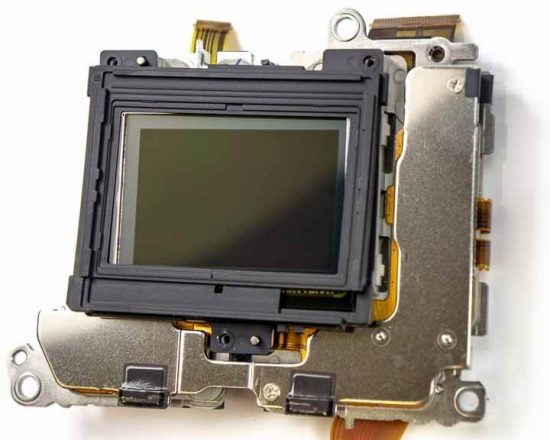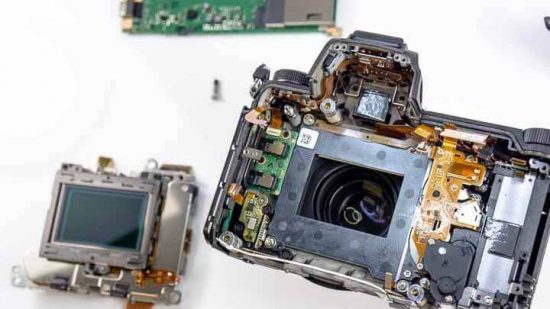
Kolarivision published their Nikon Z6 mirrorless camera teardown and disassembly pictures online (see also the previous Nikon Z7 teardowns) – here is their conclusion:
“Nikon follows the example set by Sony in some aspects of its design as well as it’s market philosophy. The cameras also improves upon the Sony A7 series in certain areas like cover glass thickness, weather sealing, and heat management. However, as we previously discussed, neither the Sony or Nikon cameras come close to the Canon EOS R in terms of beautiful design, and that’s a fact.”
Additional pictures and information:
Cosmetically, the Z6 is identical to the Z7 if you don’t count the little ‘6’ in the lower right-hand corner of its front panel. The two bodies are exactly the same weight, gram for gram. All the exterior sealing is there where it was on the Z7, and the body is incredibly solid with no rattling, jingling, or play between the parts. The differences between the Z6 and Z7 are purely internal.
Disassembly begins much the same way as the Z7 as well. The outer screws are in the same places, there are still quite a few of them, and the battery retention clip will still fire out of the bottom of the camera at great speed if you’re not careful.
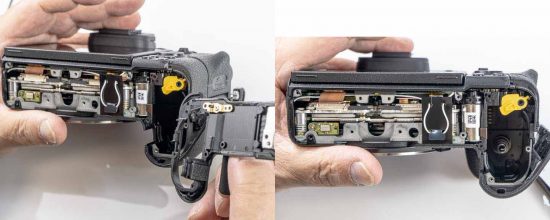
The bottom will come off first. It’s quite cramped in there with very little empty space, unlike the EOS R. The sensor stabilization mechanism dominates the internals of the camera and sits on some hefty springs.
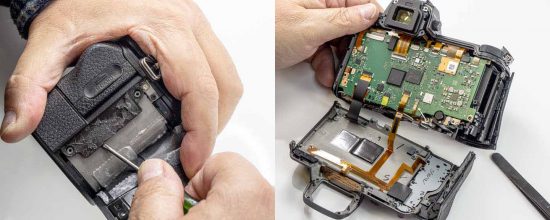
With some peeling, prying, and good ol’ fashioned elbow grease, the back panel and LCD will come off in one piece, exposing the motherboard.
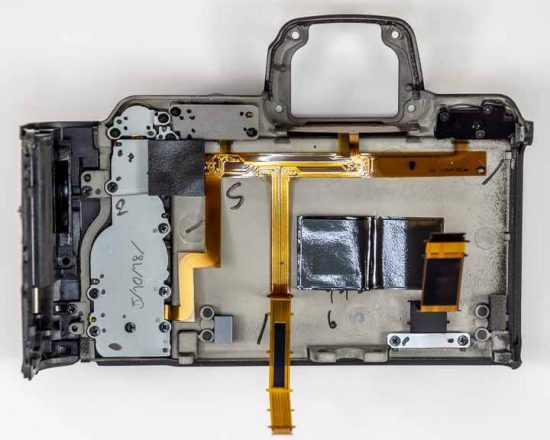
A look at the back panel. There isn’t much to see here, and that’s probably a good thing. Neatly arranged cables and a modest amount heat sinking material are not only pleasant for us as technicians, but they also suggest careful design and good temperature control, something that has been an issue for Sony cameras.
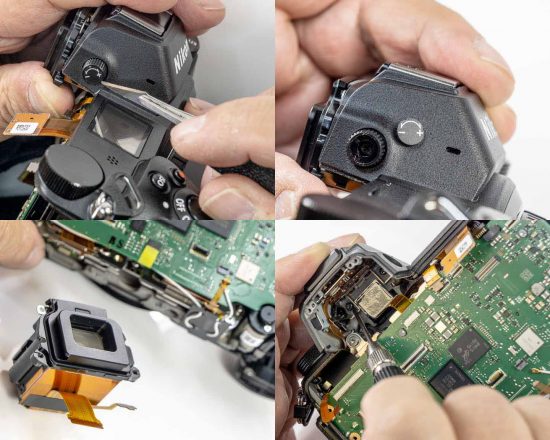
Before the main board can come out, a screw underneath the EVF has to come out. For the EVF to come out, you need to remove a screw hidden underneath the viewfinder diopter dial. These new mirrorless cameras are tricky to take apart. The latest generation Sony cameras have a similar arrangement.
Now that the board is out of the camera and in a safe place, we can extract the exceptionally hefty screws holding the sensor assembly on its exceptionally hefty springs. Now you’re free to extract the sensor and IBIS shaker mechanism and raise it up proudly like a newborn child.
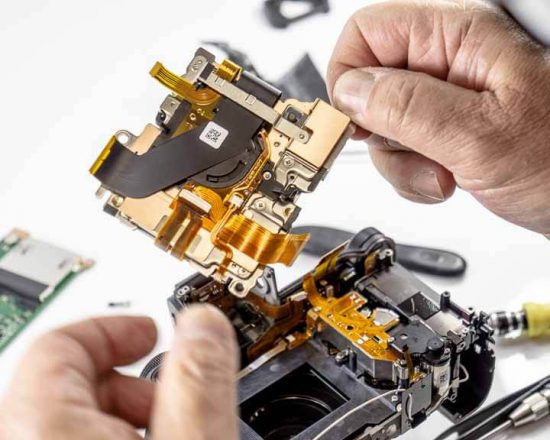
Some closeup views of what lies beneath the sensor before we move on. The input and output audio jacks are quarantined on their own separate board, another feature shared by Sony. This design makes it far more acceptable for them to get wet or damaged. If they do, they probably won’t short out the entire motherboard like they might if they were integrated onto that crucial part.
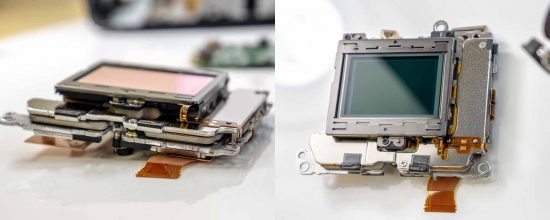
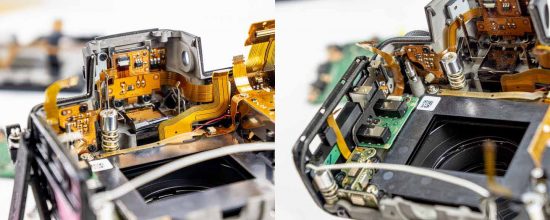
Another thing we noticed was how stiff the IBIS shaker seemed compared to those found in other cameras. It barely budges when pressure is applied, but it still boasts the same 5 stops of stabilization claimed by the A7 III.

Now for our specialty: the glass in front of the sensor.
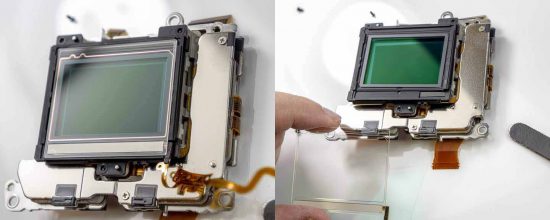
The dust reduction system glass measures in at a bit over 0.3mm thick.
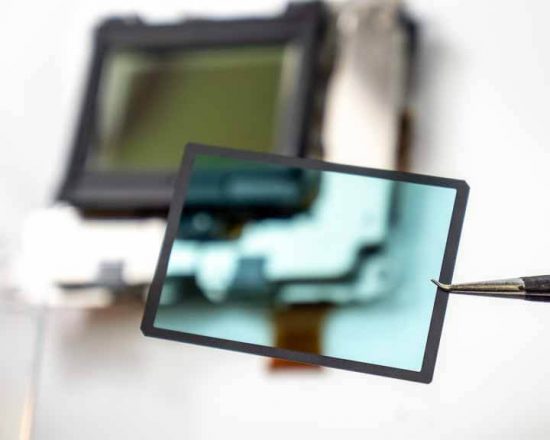
The lowpass IR/UV cut filer underneath is thicker, at 0.8mm. This puts the total thickness of the Nikon Z6’s sensor glass at 1.1mm, identical to the Z7. This makes the Z6 an excellent candidate for adapting legacy film and rangefinder lenses. However, our Ultra-Thin conversion, measuring in at 0.2mm, is still the best option of optimal legacy lens performance with a mirrorless digital camera. (Coming soon for the Nikon Z series)
Check Nikon Z6 avaialbility: Adorama | B&H | WEX UK | Park Camera UK | Calumet DE | Amazon US | Amazon UK | Amazon DE | Amazon FR.
